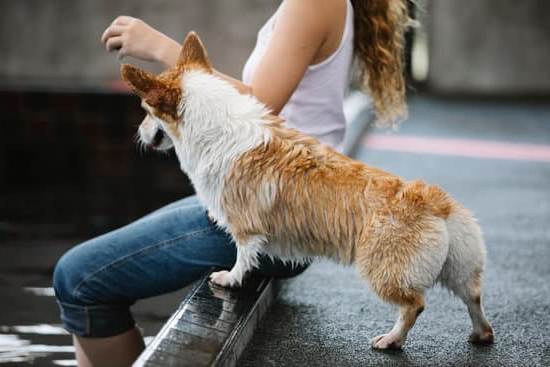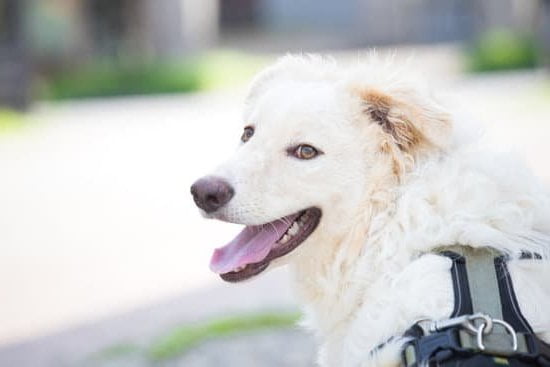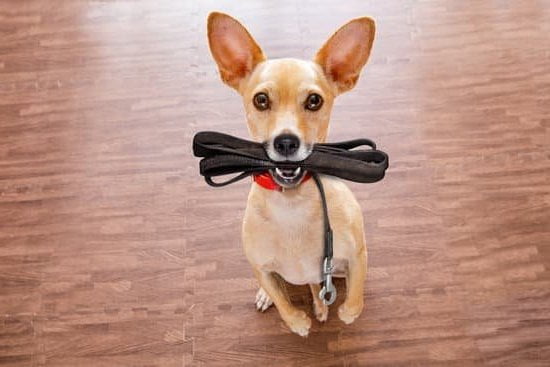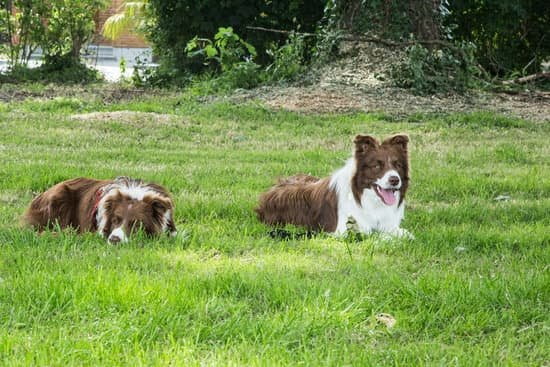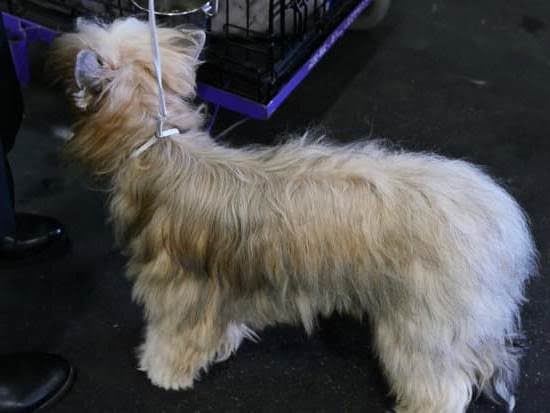Are you tired of finding unexpected messes in your house? If you’re wondering how to train dogs not to poop in the house, proper dog toilet training is essential.
Whether you have a new puppy or an older dog, understanding the reasons behind indoor accidents and implementing effective training techniques can make all the difference. In this article, we will explore the importance of proper dog toilet training and provide helpful tips and strategies for successfully training your furry friend.
One of the key factors in preventing indoor accidents is establishing a consistent feeding schedule for your dog. This helps regulate their bathroom habits and makes it easier to anticipate when they may need to go outside.
Creating a designated potty area and using positive reinforcement techniques are also crucial in teaching your dog where it is appropriate to relieve themselves. Additionally, regular exercise and daily walks play a significant role in preventing indoor accidents by allowing your dog to release excess energy and empty their bladder.
Accidents are inevitable during the training process, but it’s essential to address them promptly and clean up any messes properly to avoid reinforcing bad habits. However, if you find yourself struggling with toilet training despite your best efforts, seeking professional help from a qualified trainer or behaviorist can provide valuable guidance and support.
With patience and persistence, you can effectively train your dog not to poop in the house, creating a happier and cleaner environment for both you and your furry companion.
Understanding the Reasons Behind Indoor Accidents
One of the most frustrating challenges for dog owners is dealing with indoor accidents. However, it’s important to understand that there are several reasons why dogs may have accidents in the house. It could be due to insufficient or inconsistent toilet training, medical issues, anxiety, or even territorial marking. By understanding the underlying reasons behind indoor accidents, dog owners can take the necessary steps to address the issue and prevent future mishaps.
Dogs may have accidents in the house due to a lack of proper toilet training. If a dog has not been effectively trained on where to go potty, they may resort to using the house as their bathroom. Additionally, health issues such as urinary tract infections or digestive problems can also lead to unexpected indoor accidents.
Moreover, stress and anxiety can also cause dogs to have accidents inside the house. Dogs may urinate or defecate indoors when they are feeling anxious or uncomfortable in their environment.
In order to effectively address indoor accidents, it is crucial for dog owners to observe their pet’s behavior and identify any potential triggers for these mishaps. Additionally, seeking advice from a professional dog trainer or veterinarian can provide valuable insights into how to train dogs not to poop in the house and address any underlying issues contributing to indoor accidents.
With patience and persistence, dog owners can work towards establishing a consistent toilet training routine and create a stress-free environment for their furry companions.
Establishing a Consistent Feeding Schedule
Proper feeding schedules play a crucial role in your dog’s toilet training. Consistency in their meal times can help regulate their digestive system, making it easier to predict when they’ll need to go outside. Here are some tips on how to establish a consistent feeding schedule for your furry friend:
- Determine the appropriate feeding times based on your dog’s age, size, and breed. Puppies, for example, may need to eat more frequently than adult dogs.
- Stick to a set schedule by feeding your dog at the same times each day. This can help regulate their bathroom habits and make it easier for you to anticipate when they’ll need to go outside.
- Avoid free-feeding or leaving food out all day for your dog to graze on. Scheduled meals will make it easier for you to monitor their eating habits and eliminate unnecessary indoor accidents.
By establishing a consistent feeding schedule, you can better control your dog’s potty habits and minimize the chances of them having accidents indoors. Combined with other training techniques and positive reinforcement, maintaining a regular mealtime routine is a key component in successfully teaching your dog where to do their business and how to train dogs not to poop in the house.
Creating a Designated Potty Area
When it comes to training your dog not to poop in the house, creating a designated potty area is essential. This section of the training process involves teaching your dog where it is appropriate to relieve themselves. By establishing a specific spot for them to go, you can significantly reduce indoor accidents and build a consistent routine for your furry friend.
To start, choose an outdoor area that is easily accessible and comfortable for your dog. This could be a corner of the yard or a specific patch of grass. Once you have selected the spot, take your dog to the designated area at regular intervals throughout the day, especially after meals and naps. Use verbal commands such as “go potty” or “do your business” to encourage them to relieve themselves in that location.
It’s important to remember that patience is key when creating a designated potty area for your dog. Training takes time, so be consistent with bringing them to the same spot and using positive reinforcement techniques when they eliminate in the chosen area. With enough practice and consistency, your dog will learn where it is appropriate to go to the bathroom and minimize accidents inside the house.
Incorporating a designated potty area into your dog’s training routine is an effective way to teach them not to poop in the house. By providing clear guidance on where it is acceptable for them to relieve themselves, you can set them up for success and foster good bathroom habits. Remember that every dog is different, so be patient and persistent as you train them in this crucial aspect of their behavior.
Using Positive Reinforcement Techniques
When it comes to dog training, positive reinforcement is a powerful tool that can be used to teach dogs good behavior, including how to eliminate outside instead of inside the house. Here are some positive reinforcement techniques that can help in training dogs not to poop in the house:
1. Clicker Training: Clicker training is a popular positive reinforcement technique that involves using a clicker to mark desired behavior, followed by a reward such as treats or praise. In the case of potty training, you can use the clicker to mark and reward your dog when they eliminate in the designated potty area outside.
2. Treat Rewards: Offering treats as rewards for desired behavior is an effective way to encourage dogs to repeat that behavior. When your dog successfully eliminates outside, immediately give them a treat and praise them for doing so. Over time, they will learn that eliminating outside results in a tasty reward.
3. Verbal Praise and Affection: Dogs respond well to verbal praise and affection from their owners. When your dog eliminates outside, be sure to shower them with praise and affectionate words such as “good boy” or “good girl.” This positive reinforcement will motivate them to continue eliminating outside.
By consistently using positive reinforcement techniques, you can effectively train your dog not to poop in the house. It’s important to remember that patience and persistence are key when using these methods, as every dog learns at their own pace. With proper consistency and positivity, your furry friend will soon understand where they should be doing their business.
Incorporating Regular Exercise and Daily Walks
Exercise and Bathroom Habits
Dogs that receive regular exercise are more likely to have better control over their bowel movements and are less likely to have accidents indoors. Taking your dog for daily walks or engaging in regular playtime can help release excess energy and stimulate their digestive system, making it less likely for them to feel the need to relieve themselves inside the house.
Establishing a Routine
When training a dog not to poop in the house, establishing a routine is key. Dogs thrive on routine, so taking them out for walks at the same times each day can help them develop a regular bathroom schedule. Try taking your dog out first thing in the morning, after meals, and before bedtime. This consistency can help prevent accidents inside the house.
Quality Time With Your Dog
In addition to physical exercise, spending quality time with your dog during walks also helps strengthen your bond and understanding of each other’s needs. Pay attention to your dog’s body language during walks – they may show signs of needing to go potty such as sniffing around or circling in one spot. By being attentive to these cues and providing opportunities for them to relieve themselves outside, you can reinforce positive bathroom habits.
Incorporating regular exercise and daily walks into your dog’s routine is an essential part of toilet training. Not only does it promote physical health, but it also plays a role in shaping good bathroom habits that can lead to a clean household. Through consistent walking schedules and attentive care during these activities, you can effectively teach your dog when and where it is appropriate to relieve themselves – keeping accidents inside the house at bay.
Addressing Accidents and Cleaning Up Messes Properly
Accidents are an inevitable part of the training process, and it’s important to address them in the right way to effectively train your dog not to poop in the house. When accidents happen, it’s crucial to remain calm and avoid punishing your dog.
Punishment can lead to fear or anxiety, making it even more challenging to train them. Instead, focus on cleaning up the mess promptly and using odor-neutralizing cleaners to eliminate any lingering scents that may attract your dog back to the same spot.
One effective method for cleaning up indoor accidents is to use a solution of equal parts water and white vinegar. This not only helps eliminate odors but also serves as a deterrent for your dog, as they tend to dislike the smell of vinegar. Additionally, consider using enzymatic cleaners specifically designed to break down pet odors and stains. These cleaners are effective at removing traces of accidents and discouraging your dog from repeating the behavior in the same area.
Consistency is key when addressing accidents, so be sure to clean up any messes as soon as possible and with the appropriate cleaning products each time. By doing so, you’re not only eliminating odors but also sending a clear message to your dog that indoor elimination is not acceptable.
| Method | Advantages |
|---|---|
| Water and white vinegar solution | Eliminates odors, serves as a deterrent for dogs |
| Enzymatic cleaners | Breaks down pet odors and stains, discourages repeat behavior |
It’s important to understand that accidents are part of the learning process when it comes to training dogs not to poop in the house. By addressing them calmly and effectively, you can help guide your dog towards successful toilet training while maintaining a positive and supportive environment for their learning journey. Remember that patience and consistency are crucial throughout this process.
Seeking Professional Help When Needed
Recognizing the Signs
If you have been consistently applying proper toilet training techniques to your dog, but they still continue to have accidents in the house, it may be time to seek professional help. Some signs that indicate the need for professional assistance include your dog showing signs of distress when trying to hold their bladder, exhibiting anxiety or fear towards going outside, or if there are any underlying health issues causing the behavior.
Consulting a Professional Trainer or Behaviorist
A professional dog trainer or behaviorist can provide valuable insight into why your dog may be having difficulty with potty training. They can assess any underlying behavioral issues and develop a customized training plan specific to your dog’s needs. Additionally, a trainer can provide guidance on modifying your training techniques and addressing any potential environmental factors that may be contributing to the problem.
Working With a Veterinarian
If you suspect that there may be an underlying medical issue causing your dog’s indoor accidents, it is essential to consult with a veterinarian. Health problems such as urinary tract infections, digestive issues, or mobility limitations can all contribute to potty training difficulties. A comprehensive veterinary assessment can rule out any medical concerns and ensure that your dog receives the appropriate treatment.
Seeking professional help when needed is crucial in addressing persistent potty training issues in dogs. By recognizing the signs that indicate the need for intervention and consulting with experienced professionals, you can receive guidance and support tailored to your dog’s unique circumstances. Remember that patience and persistence are key components of successful dog toilet training, and seeking professional help is simply another step in ensuring your dog’s well-being and overall success in their training journey.
Conclusion
In conclusion, training a dog not to poop in the house requires patience, consistency, and positive reinforcement. It is important to understand the reasons behind indoor accidents, such as anxiety, lack of proper training, or health issues. By establishing a consistent feeding schedule and creating a designated potty area outside, dog owners can help their pets understand where they should be doing their business.
Positive reinforcement techniques, such as praise and treats for going potty outside, are essential for encouraging good behavior. Additionally, regular exercise and daily walks can help prevent accidents by allowing dogs to relieve themselves outside during their outings. Accidents will inevitably happen during the training process, but it’s crucial to address them calmly and clean up messes properly to avoid reinforcing negative behavior.
For some dog owners, seeking professional help from a certified trainer or behaviorist may be necessary if their efforts to train their dog are not yielding the desired results. Ultimately, with patience and persistence in training your dog, it is possible to teach them not to poop in the house and create a happy and healthy living environment for both the pet and its owner.
Remember that with time and effort, success is achievable when learning how to train dogs not to poop in the house.
Frequently Asked Questions
How Do I Stop My Dog From Pooping in the House?
One way to stop your dog from pooping in the house is to establish a regular routine for potty breaks and stick to it. Consistency and positive reinforcement when they go outside can help prevent accidents indoors.
How Do I Stop My Dog From Toileting in the House?
To prevent your dog from toileting in the house, you should closely supervise them, especially after meals and naps. If you catch them in the act, interrupt them and take them outside to finish their business.
Why Is My Fully Trained Dog Pooping in the House?
A fully trained dog may start pooping in the house due to various reasons such as medical issues, anxiety, changes in routine, or territorial marking. It’s essential to rule out any health concerns first and then address any behavioral issues with patience and consistency.

Welcome to the blog! I am a professional dog trainer and have been working with dogs for many years. In this blog, I will be discussing various topics related to dog training, including tips, tricks, and advice. I hope you find this information helpful and informative. Thanks for reading!

